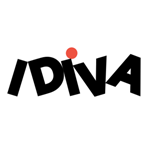Body gua sha: Ancient wisdom for modern wellness

Body gua sha is an ancient healing technique that has gained significant popularity in the modern wellness world. Known for its holistic approach to improving health and beauty, body gua sha involves using a tool to scrape the skin, promoting better circulation, reducing inflammation, and enhancing overall well-being. This article delves into the history, usage, and benefits of body gua sha, highlighting why it has become a beloved practice in contemporary self-care routines.
History of Body Gua Sha
Gua sha, also known as "scraping therapy," originates from traditional Chinese medicine (TCM). The term "gua" means to scrape, and "sha" refers to the red, raised marks that appear on the skin after treatment. This practice dates back over 2,000 years and was traditionally used to treat various ailments, including fever, muscle pain, and respiratory issues.
The technique was believed to release stagnant energy, or "qi," from the body, helping to restore balance and promote healing. In ancient times, practitioners used tools made from materials such as jade, bone, or horn to perform gua sha. Today, the practice has evolved, and modern gua sha tools are often made from materials like jade, rose quartz, or stainless steel, reflecting a blend of tradition and contemporary aesthetics.
How to Use Body Gua Sha
Using body gua sha involves several steps to ensure effective and safe application:
-
Preparation: Start by cleansing the skin and applying a lubricant such as oil or lotion to reduce friction. This helps the gua sha tool glide smoothly over the skin.
-
Selecting the Tool: Choose a gua sha tool that suits your preference. Common shapes include flat stones or comb-like tools, each designed to target different areas of the body.
-
Technique: Hold the tool at a 30 to 45-degree angle to the skin. Using gentle to moderate pressure, scrape the tool across the skin in long, sweeping motions, following the contours of the body. Move in the direction of lymphatic flow, usually toward the heart.
-
Target Areas: Focus on areas with muscle tension or where circulation needs improvement. Common target areas include the back, shoulders, arms, and legs.
-
Post-Care: After the session, hydrate the skin with a moisturiser and drink plenty of water to aid in detoxification.
Benefits of Using Body Gua Sha
-
Improves Circulation: The scraping motion of gua sha stimulates blood flow, which helps deliver oxygen and nutrients to tissues while removing metabolic waste. This can lead to improved skin tone and a reduction in the appearance of cellulite.
-
Reduces Muscle Tension: Gua sha helps to break up adhesions and tightness in the muscles, providing relief from pain and soreness. It is particularly effective for individuals with chronic pain conditions or those recovering from physical exertion.
-
Promotes Lymphatic Drainage: The technique encourages the movement of lymphatic fluid, which helps to detoxify the body and reduce swelling and puffiness. This can lead to a more sculpted and toned appearance.
-
Enhances Skin Health: Regular gua sha practice can stimulate collagen production, leading to firmer, more youthful-looking skin. It also helps to clear congestion and improve the overall texture of the skin.
-
Holistic Healing: Beyond physical benefits, gua sha is known to have calming effects on the mind. The rhythmic scraping motion can be meditative, reducing stress and promoting a sense of well-being.
Conclusion
Body gua sha is a powerful practice that blends ancient wisdom with modern wellness. Its ability to improve circulation, reduce muscle tension, promote lymphatic drainage, enhance skin health, and provide holistic healing makes it a valuable addition to any self-care routine. By incorporating body gua sha into your regular regimen, you can experience the profound benefits that this time-honoured technique has to offer.








